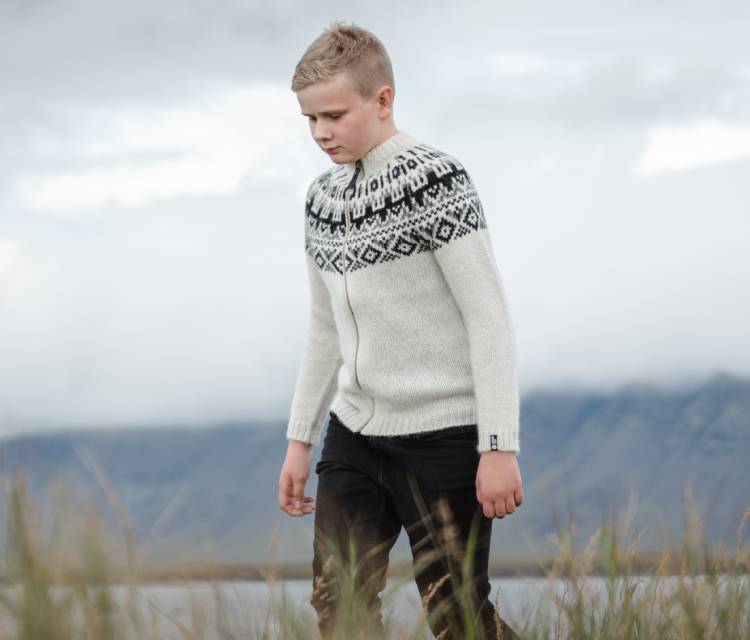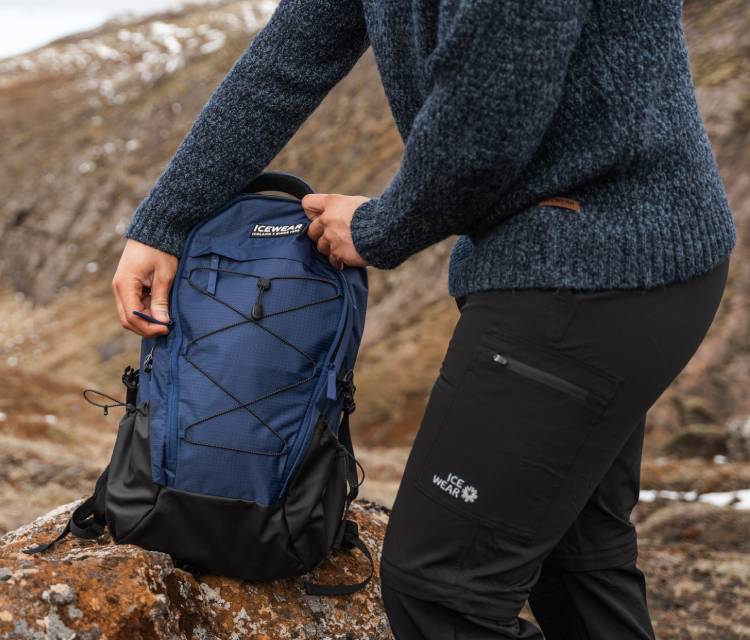Contents
Key findings for Verslunarmannahelgi:
- Verslunarmannahelgi, or Merchants' Weekend, is an Icelandic holiday typically celebrated at the start of August.
- The packing list for Verslunarmannahelgi weekend includes wicking base layers, a waterproof top layer, and comfortable waterproof boots for time on your feet. It also includes traditional Icelandic wool sweaters.
- Summer days are mild and often sunny, but rain is unpredictable, and the nights cool significantly.
- The most iconic celebration of Verslunarmannahelgi is Þjóðhátíð í Vestmannaeyjum. “Vestmannaeyjum” is the Icelandic name for the Westman Islands, and Þjóðhátíð is the name of the annual festival there.
- Recent years have counted almost 16,000 people in attendance at Þjóðhátíð, most of them visiting the Vestmannaeyjar from the mainland or from abroad.
- The festival’s highlights are many, but each night of the long weekend—Friday, Saturday, and Sunday—has its own headline event.
- The Þjóðhátíð festival in 2024 will be the 150th celebration, and Icewear is the official sponsor. Icewear has created a special collection for Þjóðhátíð 2024.
- The Westman Islands, or Vestmannaeyjar, are a cluster of 15 islands off the southern coast of Iceland. The archipelago is known for its volcanic-formed landscapes and rich history, offering a blend of natural beauty and cultural significance.
- The Westman Islands boast the world's largest nesting colony of Arctic Puffins.
- If you want to see traditions honored and memories forged against the backdrop of Þjóðhátíð í Vestmannaeyjum, book in advance.
In Iceland, the Midnight Sun of June yields to gradually shorter days in July. The sun is still slow to set, however, skating across the horizon before finally dipping out of sight for the short and mild summer nights.
Then, in early August, the fleeting nights and long days are woven seamlessly into one weekend of tradition and celebration. The holiday is called Verslunarmannahelgi, and the best way to celebrate it is at Þjóðhátíð í Vestmannaeyjum.
What is Verslunarmannahelgi (Merchant Weekend)?
Verslunarmannahelgi, or Merchants’ Weekend, is one of Iceland’s distinctive holidays, typically celebrated at the start of August. It was first established for shopkeepers and merchants to take a well-deserved break during the summer season, which otherwise is extremely busy.
The anticipation for Verslunarmannahelgi starts months in advance, especially for anyone attending festivals to celebrate it. Events sprout up across the country, each one bringing its unique charm to the long weekend. Over 150 years, Verslunarmannahelgi has grown into a vibrant tapestry of Icelandic life: family, friends, resilience, nature, and tradition are all part of the celebration.
Families start planning their summer excursions at the start of spring, whether booking camping sites or ferry tickets to the biggest Verslunarmannahelgi festival.
Camping During Verslunarmannahelgi
In Iceland, camping trips are enormously popular over the summer. This is one of Icelanders’ favorite ways to enjoy the summer weather, and the Verslunarmannahelgi weekend is a special occasion to plan an excursion.
When campers pack for Verslunarmannahelgi, they pack wicking shirts for hiking and outdoor activities, and water-repellent shoes and jackets to be ready for whatever the capricious weather throws their way. They also pack their traditional Icelandic wool sweaters, because they offer practical benefits (like natural temperature regulation) and are traditionally worn during Verslunarmannahelgi. When it cools down at night, the majority of Icelanders—whether camping or at a festival—can be seen wearing one.
The packing list for Verslunarmannahelgi weekend is a testament to Icelanders’ experience with the weather. Summer days are mild and often sunny, but rain is unpredictable, and the nights cool significantly.
Þjóðhátíð í Vestmannaeyjum: The National Festival in Westman Islands
The most iconic celebration of Verslunarmannahelgi is Þjóðhátíð í Vestmannaeyjum. “Vestmannaeyjum” is the Icelandic name for the Westman Islands, and Þjóðhátíð is the name of the annual festival there. Þjóðhátíð has become the centerpiece of Verslunarmannahelgi every summer, drawing thousands of attendees each year.
The Interesting Origin of Þjóðhátíð
The first Þjóðhátíð took place in 1874 due to a curious turn of events. Verslunarmannahelgi festivals were taking place all over Iceland, and people living on the Westman Islands planned to attend the festival in Þingvellir.
Bad weather, however, prevented all Westman Islanders from joining the mainland celebrations. Undeterred, Vestmannaeyjar residents decided to have their own party, and the tradition continued. Since then, it’s grown into one of Iceland’s most significant annual cultural events. Recent years have counted almost 16,000 people in attendance, most of them visiting the Vestmannaeyjar from the mainland or from abroad.
Highlights of the Þjóðhátíð Celebrations
The annual Þjóðhátíð festival takes place on Heimaey, the home island of the archipelago. Its jagged volcanic formations rise around the valley where the party takes place, enclosing the scene in breathtaking beauty. The slopes of these formations are used as a platform stage throughout the weekend.
The festival’s highlights are many, but each night of the long weekend—Friday, Saturday, and Sunday—has its own headline event.
- On Friday night, festival-goers congregate around the Great Bonfire. The bonfire is a meeting point to gather and tell stories and sing songs into the night. Around the valley, innumerable white tents are set up, and people mingle and rest inside. Music is playing everywhere. Everyone seems to be dancing or singing. People mull around all day and night, and the party continues until dawn.
- On Saturday, families socialize during the day while children play all over the festival grounds. The day is broken up by multiple concerts, and as evening creeps in, headliners continue to take the stage. Everyone is enjoying the fresh air, whether they’re visiting from nearby hotels or camping out at the festival itself. Come nightfall, the sky lights up with a spectacular show of fireworks. The acoustics bounce off the jagged mountains and seem to thunder through the valley. The colors contrast against the dark night sky, six miles (10kms) from the Icelandic mainland.
- Then, on Sunday, the most beloved event—called brekkusöngur—takes place. This communal sing-along is the finale of the festival after another day of children playing while families gather and mingle. The brekkusöngur sing-along is incredible. Thousands of people sing together, their voices harmonized, the sky alight with a long row of flares lit along the mountain for the occasion. Each year, an extra flare is ignited, one for each year that the festival has taken place. In 2024, there will be 150 flares lit at Þjóðhátíð.
Þjóðhátíð 2024
The Þjóðhátíð festival in 2024 has garnered extra excitement since it will be the 150th celebration.
It was also announced that Icewear is the official sponsor for Þjóðhátíð. The outdoor clothing and Icelandic wool clothing brand has even created a special collection for Þjóðhátíð 2024, blending traditional wool designs with contemporary styles and festival-goers’ needs in mind.
Exploring Vestmannaeyjar: A Jewel of Iceland
The Westman Islands, or Vestmannaeyjar, are a cluster of 15 islands off the southern coast of Iceland. The archipelago is known for its volcanic-formed landscapes and rich history, offering a blend of natural beauty and cultural significance.
The islands of Vestmannaeyjar were formed by underwater volcanic eruptions, forming dramatic cliffs, volcanic craters, and vibrant green landscapes around the jagged mountainous formations. Heimaey is the largest island and is home to most of the archipelago’s population of roughly 4,300 people. Heimaey is also the hub of Þjóðhátíð.
Demographically, Vestmannaeyjar is a small but vibrant community. Those who live on the island are known for their warmth and hospitality, and they take great pride in the heritage and natural wonders surrounding them.
Tourism plays a significant role in Vestmannaeyjar’s economy. The Westman Islands provide a plethora of hiking trails across the rugged terrain, each with its own breathtaking views of the ocean and neighboring islands. Boat tours offer close encounters with the rich marine life, like whales and seals. Local museums also provide a look into the history and traditions of the islands.
The Westman Islands’ Puffin Population
One of the most adored aspects of Vestmannaeyjar is its avian population. Specifically, the islands boast the world’s largest nesting colony of Arctic Puffins, making it a paradise for birdwatchers and wildlife enthusiasts. The summer months bring panoramic views of Vestmannaeyjar cliffs dotted with these black-and-white birds, their bright yellow beaks visible at a great distance.
Puffins have antics as endearing as their look. Called “clown of the sea” or “sea parrot” by many, the affection name Icelanders call them is “Lundi.”
How to visit Vestmannaeyjar for Þjóðhátíð
Verslunarmannahelgi, and especially Þjóðhátíð, is more than a holiday. This summer weekend is an annual celebration of Icelandic tradition and togetherness.
For those who go hiking over Verslunarmannahelgi weekend, it’s a cherished time to embrace nature and spend time with loved ones.
For those who go to Þjóðhátíð or other festivals, this weekend hallmarks part of the rich tapestry of tradition: 150 years of Þjóðhátíð, even more than that of Verslunarmannahelgi, and well over a millennium of Icelandic culture.
If you want to see traditions honored and memories forged against the backdrop of Þjóðhátíð í Vestmannaeyjum, these are some key thoughts to get you started on the requisite planning:
- Book in advance, whatever accommodation you wish to find. There are hotels, guesthouses, and camping sites to choose from.
- Plan how you’ll travel to the Westman Islands from mainland Iceland. The most common is to travel by ferry, called the Herjólfur, which has comfortable seating and amenities, including a small café. Book your ferry tickets in advance, because most people going to Þjóðhátíð will be doing so by ferry.
- Expect the unexpected when it comes to weather. Icelandic weather is notoriously unpredictable, so be prepared for warm, sunny days, rainstorms, and cooler nights. Consider your “festival essential” clothing items, too, like comfortable walking shoes. Don’t forget your Icelandic wool sweater, either.












